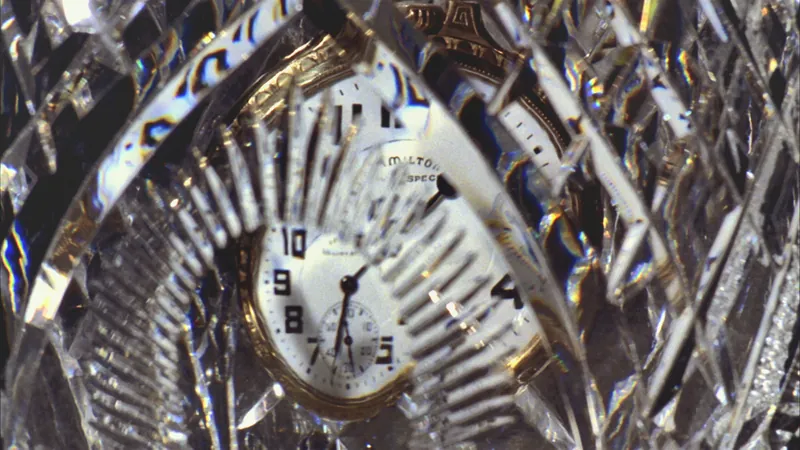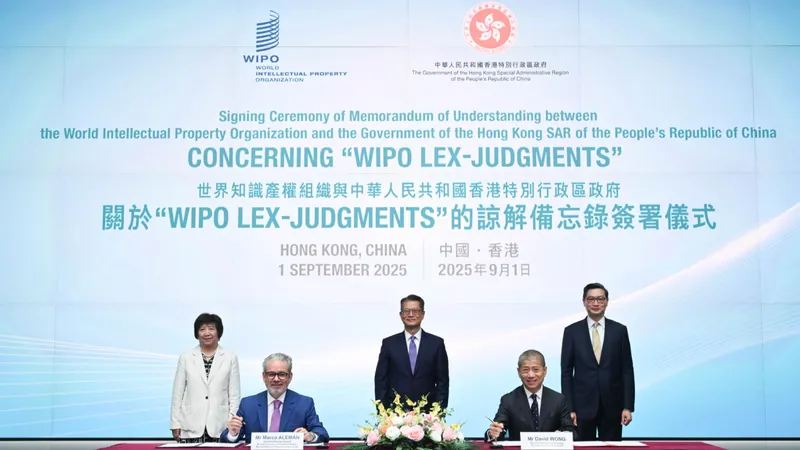
Scientists Unveil Stunning Visible Time Crystals That Could Revolutionize $100 Bills!
2025-09-09
Author: Jia
In an astonishing breakthrough, scientists have successfully created the world’s first visible time crystals—a discovery that could transform the future of currency and technology!
These captivating time crystals manifest through unique patterns, known as "psychedelic tiger stripes," which emerge when light interacts with liquid crystals similar to those seen in LCD screens. This innovative approach allows scientists to observe this cryptic phase of matter with the naked eye, opening doors to a myriad of practical applications, from enhancing telecommunications to thwarting counterfeiters.
Published on September 4 in the prestigious journal Nature Materials, this groundbreaking research led by Hanqing Zhao, a graduate student at the University of Colorado Boulder, reveals that these time crystals can be examined directly under a microscope. "Under special conditions, they can even be seen without any instruments," Zhao noted.
Originally theorized in 2012 by Nobel laureate Frank Wilczek, time crystals are phenomenal structures where particles perpetually repeat in time—much like traditional crystals exhibit repetitive patterns in space. This defiance of conventional physics poses intriguing questions about the nature of time and symmetry.
Moreover, while conventional crystals disrupt spatial symmetry, time crystals challenge temporal symmetry, allowing them to oscillate between two states indefinitely without losing energy. This has sparked debates about the boundaries of thermodynamics; however, the scientists clarify that these crystals, powered by light, merely repeat their two-state patterns without violating any physical laws.
Previous attempts at creating time crystals involved complex materials such as diamonds and quantum computers, which could only be examined via laser light fluctuations. The new method, however, employs liquid crystals, which are a blend of solid and liquid properties, sandwiched between specially coated glass.
When these glass pieces are squeezed just right, they form mobile kinks that mimic atomic behavior. "These twists are fundamental and can’t be easily removed—they’re constantly interacting with each other," explained Ivan Smalyukh, co-author of the study and physics professor at CU Boulder.
By illuminating the glass with light, the researchers trigger the dye molecules to respond, causing the liquid crystals to form thousands of dynamic kinks that interact in a picturesque dance through time. Remarkably, this movement remains stable even under temperature fluctuations.
Smalyukh passionately stated, "Everything is born out of nothing—just shine a light, and this elaborate world of time crystals comes to life."
Looking towards the future, the team envisions their visible time crystals becoming "time watermarks" for high-denomination bills, enhancing anti-counterfeiting measures with unique and intricate designs. Furthermore, stacking these crystals could lead to advanced data storage solutions, propelling us into a new era of technological possibilities.
"We don’t want to limit ourselves to current applications—this technology has the potential to evolve in numerous, exciting directions," Smalyukh remarked, hinting at the vast unexplored potential of this electrifying discovery.



 Brasil (PT)
Brasil (PT)
 Canada (EN)
Canada (EN)
 Chile (ES)
Chile (ES)
 Česko (CS)
Česko (CS)
 대한민국 (KO)
대한민국 (KO)
 España (ES)
España (ES)
 France (FR)
France (FR)
 Hong Kong (EN)
Hong Kong (EN)
 Italia (IT)
Italia (IT)
 日本 (JA)
日本 (JA)
 Magyarország (HU)
Magyarország (HU)
 Norge (NO)
Norge (NO)
 Polska (PL)
Polska (PL)
 Schweiz (DE)
Schweiz (DE)
 Singapore (EN)
Singapore (EN)
 Sverige (SV)
Sverige (SV)
 Suomi (FI)
Suomi (FI)
 Türkiye (TR)
Türkiye (TR)
 الإمارات العربية المتحدة (AR)
الإمارات العربية المتحدة (AR)